John Plumbe
John Plumbe Jr. (occasionally Plumb; July 13, 1809 – May 29, 1857) was a Welsh-born American entrepreneurial photographer, gallerist, publisher, and an early advocate of an American transcontinental railroad in the mid-19th century. He established a franchise of photography studios in the 1840s in the U.S., with additional branches in Paris and Liverpool. He created a lithographic process for reproducing photographic images, called the "plumbeotype."
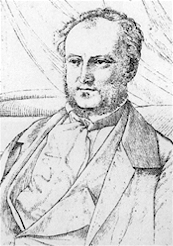
Biography
Plumbe was born in Castle Caereinion, Powys, Wales in 1809, to John Plumbe and Frances Margaretta Atherton. The family moved to Philipsburg, Pennsylvania in 1821,[1] and later to Dubuque, Iowa.[2]
Vision for a transcontinental railroad
He began his career as a civil engineer. "He studied civil engineering while still in his late teens and by 1829 was surveying sites for future railroad routes in the southern and eastern portions of the country. About 1836 he relocated to the Wisconsin territory, where he became and advocate for a trans-contintental railroad."[3] Plumbe reasoned that a transcontintental railroad "would hasten the formation of dense settlements throughout the whole extent of the road, advance the sales of the public lands, afford increased facilities to the agricultural, commercial and mining interests of the country...and enable the government to transport troops and munitions of war."[4]
Throughout his life Plumbe would continue to press for the railroad, petitioning Congress and presenting his ideas in various newspapers and other publications.
Daguerreotype galleries, 1840-1847
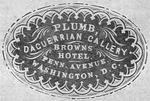
Plumbe "took up photography in 1840 after seeing the work of an itinerant daguerreotypist in Washington, D.C."[5]—probably the work of John G. Stevenson.[3]
In a short period of time, Plumbe established a string of daguerreotype studios and galleries, all bearing his name. Visitors to the galleries could view photographic works, receive training, or pay to have their portrait taken. Images produced in the Plumbe studios were credited to "Plumbe," although the work was made by others, including his brother Richard Plumbe. "Each of his galleries was staffed by a host of operators, colorists, and artisans, and many notable daguerreotypists received their training or honed their skills in Plumbe's galleries, including Richard Carr, Marsena Cannon, Charles E. Johnson, Jacob Shew, Myron Shew, and William Shew."[1] Others who learnt photographic arts through the Plumbe franchise included Ezra Chase, Samuel Masury, C.S. Middlebrook, and Gabriel Harrison.[2]
In the 1840s in the United States there were Plumbe franchises in:
- Arkansas—Plumbe's Daguerrian Gallery[6]
- Galena, Illinois[1]
- Dubuque, Iowa
- Kentucky:
- New Orleans, Louisiana[1]
- Portland, Maine[1]
- Maryland:
- Massachusetts:
- St. Louis, Missouri
- Exeter, New Hampshire[1]
- New York:
- Cincinnati, Ohio
- Pennsylvania:
- Newport, Rhode Island—Plumbe Daguerrian Gallery, Thames St.[10]
- Virginia:
- Alexandria, Virginia
- Petersburg, Virginia[1]
- Washington, DC—Plumbe National Daguerrian Gallery, Pennsylvania Ave., Main St., Walnut St.[8]
Abroad, he opened branches in:
- Liverpool, England—Plumbe National Daguerrian Gallery, Church St.[8]
- St. Catharines, Ontario, Canada[1]
- Paris, France—Plumbe National Daguerrian Gallery, Vieille Rue du Temple[8]
By 1847-1848 Plumbe sold his part of the galleries he'd established.[2][5] "He sold his New York gallery to William H. Butler, his head man there, in 1847, and the other galleries soon changed ownership, though the name "Plumbe's Daguerrean Gallery" was retained as late as 1852 in Boston (John P. Nichols, proprietor), and 1850 in Washington (Blanchard P. Paige, proprietor)."[11]
Exhibitions
Plumbe entered his photographic work in several exhibitions, including:
- Massachusetts Charitable Mechanic Association, Quincy Hall, Boston, 1844. Plumbe exhibited "35 daguerreotypes, in frames. Peculiarly pleasing, and natural in expression. Silver medal."[12]
- Fair of the American Institute, NY (1845)[13]
Publishing
In 1846 he founded the National Publishing Company which produced the weekly Popular Magazine (Augustine J.H. Duganne, editor) and other works.
California and Iowa, 1849-1857
Plumbe lived in California from 1849 to 1854.[1] In 1854 returned to Dubuque, Iowa. He may have worked for photographer Mathew Brady, c. 1855-1857.[14] He died in Iowa in 1857, at age 48.[15]
Legacy
Examples of Plumbe's work are in the New York Public Library.[16]
Gallery
- Works by John Plumbe
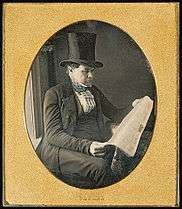 Man reading, c. 1842
Man reading, c. 1842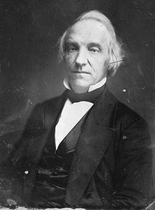 Daniel Dickinson, 1840s
Daniel Dickinson, 1840s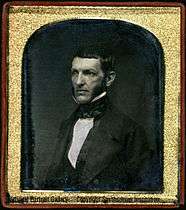 George Bancroft, c. 1844
George Bancroft, c. 1844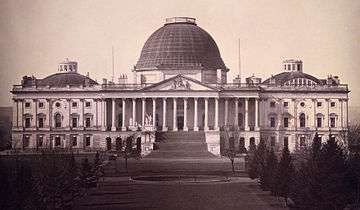 U.S. Capitol, by Plumbe, 1846
U.S. Capitol, by Plumbe, 1846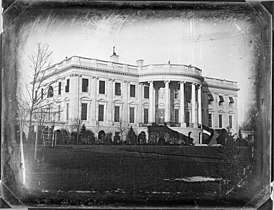 White House, by Plumbe, 1846
White House, by Plumbe, 1846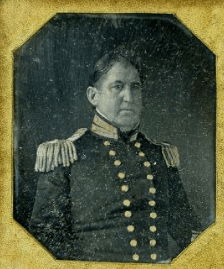 Col. James Bankhead, 2nd U. S. Artillery. c. 1846. by J. Plumbe
Col. James Bankhead, 2nd U. S. Artillery. c. 1846. by J. Plumbe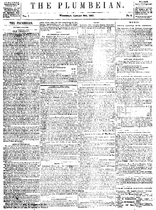 The Plumbeian, 1847
The Plumbeian, 1847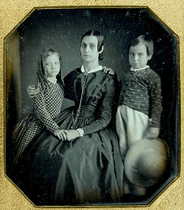 Woman and children, 19th century
Woman and children, 19th century Washington Irving. Copy daguerreotype by Mathew Brady, reverse of original by John Plumbe.
Washington Irving. Copy daguerreotype by Mathew Brady, reverse of original by John Plumbe.
References
- Peter E. Palmquist (2000), Pioneer photographers of the far west, Stanford, Calif: Stanford University Press, ISBN 0-8047-3883-1, OL 17876198M, 0804738831
- Clifford Krainik (1997). "National Vision, Local Enterprise: John Plumbe Jr. and the Advent of Photography in Washington DC". Washington History. 9 (2).
- Mary Sayre Haverstock (2000), "John Plumbe", Artists in Ohio, 1787-1900, Kent, Ohio: Kent State University Press, ISBN 0-87338-616-7, OL 344468M, 0873386167
- Plumbe, writing in a Wisconsin newspaper. Quoted in: Krainik. 1997; p.5.
- Getty Museum. John Plumbe Jr. Archived 2011-06-07 at the Wayback Machine Retrieved 2011-04-19
- New York Herald. May 21, 1845.
- The Sun (Baltimore). Nov. 29, 1843.
- Morning News (New London, CT). July 8, 1846.
- Boston Directory. 1849, 1850, 1851.
- Newport Mercury. Jan. 1, 1844.
- Beaumont Newhall (1976), "Boston Pioneers", The daguerreotype in America (3 ed.), New York: Dover Publications, ISBN 0-486-23322-7, 0486233227
- 4th exhibition of the Massachusetts Charitable Mechanic Association. 1844.
- The Sun (Baltimore). Nov. 3, 1845.
- Museum of Fine Arts Boston. Label for "Ring with miniature portrait of Washington Irving."
- San Joaquin Republican. 08-22-1857
- "Photographers in The New York Public Library's Photography Collection" (PDF). New York Public Library. 2010.
Further reading
Publications by Plumbe
- Sketches of Iowa and Wisconsin : embodying the experience of a residence of three years in those territories. St. Louis : Chambers, Harris & Knapp, 1839.
- Instructions for ... Plumbe's patent improved Daguerreotype apparatus. Boston. 1841.
- Popular Magazine. National Publishing Co., 1846-1847.
- The National Plumbeotype Gallery, c. 1846-1847.
- Plumbe's Project of a Railroad to the Pacific. The Emancipator (Boston). 09-01-1847.
- The Plumbeian. 1847.
- A faithful translation of the papers respecting the grant made by Governor Alvarado to Mr. J.A. Sutter. Sacramento, CA: 1850.
- Plumbe's Memorial Pacific Railroad. 1850.
- Memorial Against Mr. Asa Whitney's Railroad Scheme. 1851.
Works about Plumbe
- Robert Taft. John Plumbe, America's First Nationally Known Photographer. American Photography 30. January 1936.
- Alan Fern, "John Plumbe and the 'Plumbeotype,'" Philadelphia Printmaking. American Prints Before 1860, Robert F. Looney, ed. (West Chester, Penn.: Tinicum Press, 1976).
- Library Company of Philadelphia. Annual Report. 1992.
External links
| Wikimedia Commons has media related to John Plumbe. |
- WorldCat. Plumbe, John 1809-1857
- George Eastman House. Plumbe daguerreotype camera, c. 1845.
- Flickr. Col. W.W. Seaton, Mayor of Washington : plumbeotype from life
- Flickr. Boy with Toy Horn by Plumbe
- Prints & Photographs Division. "The Plumbe Daguerreotypes". Daguerreotype Portraits and Views, 1839-1864. Library of Congress.